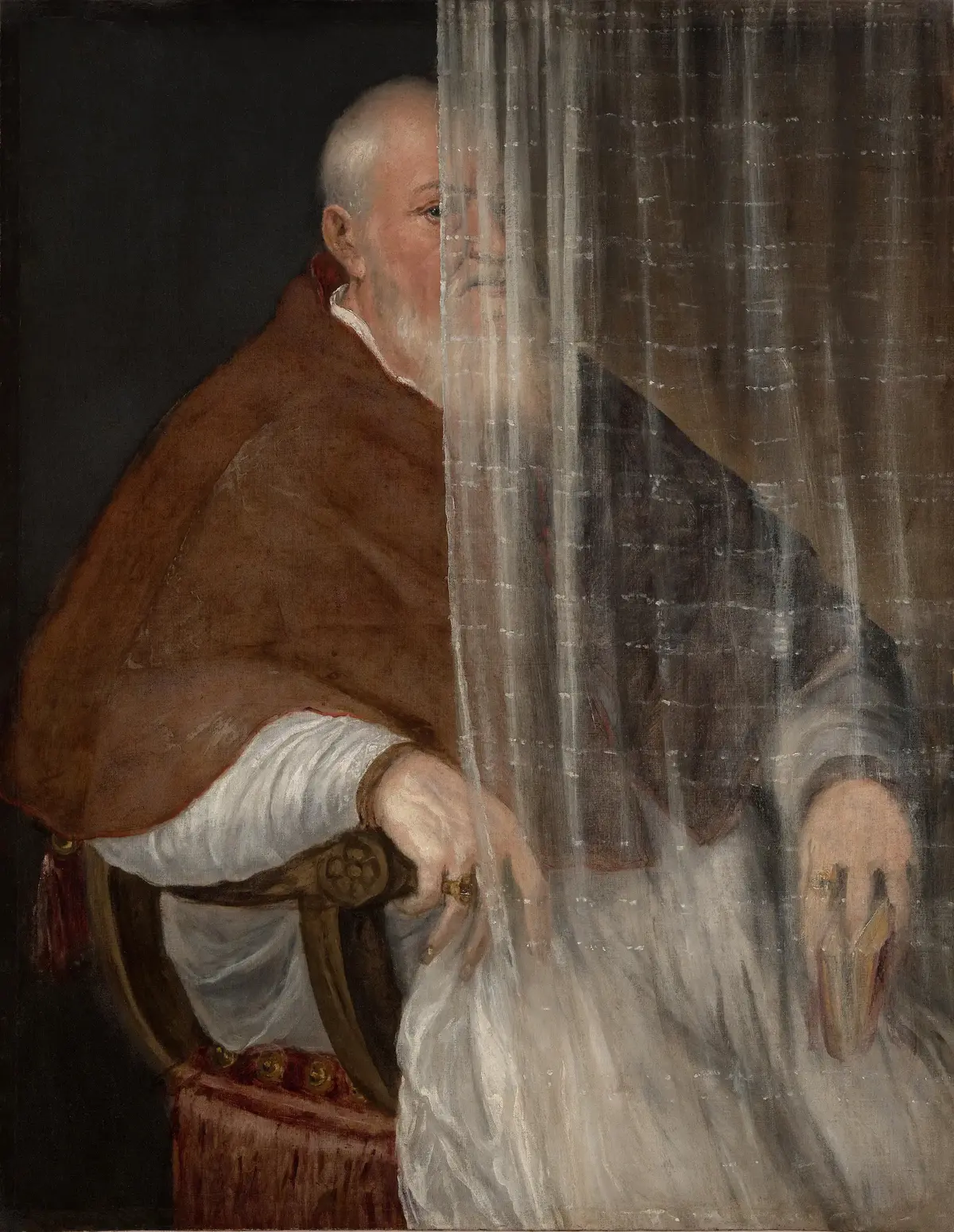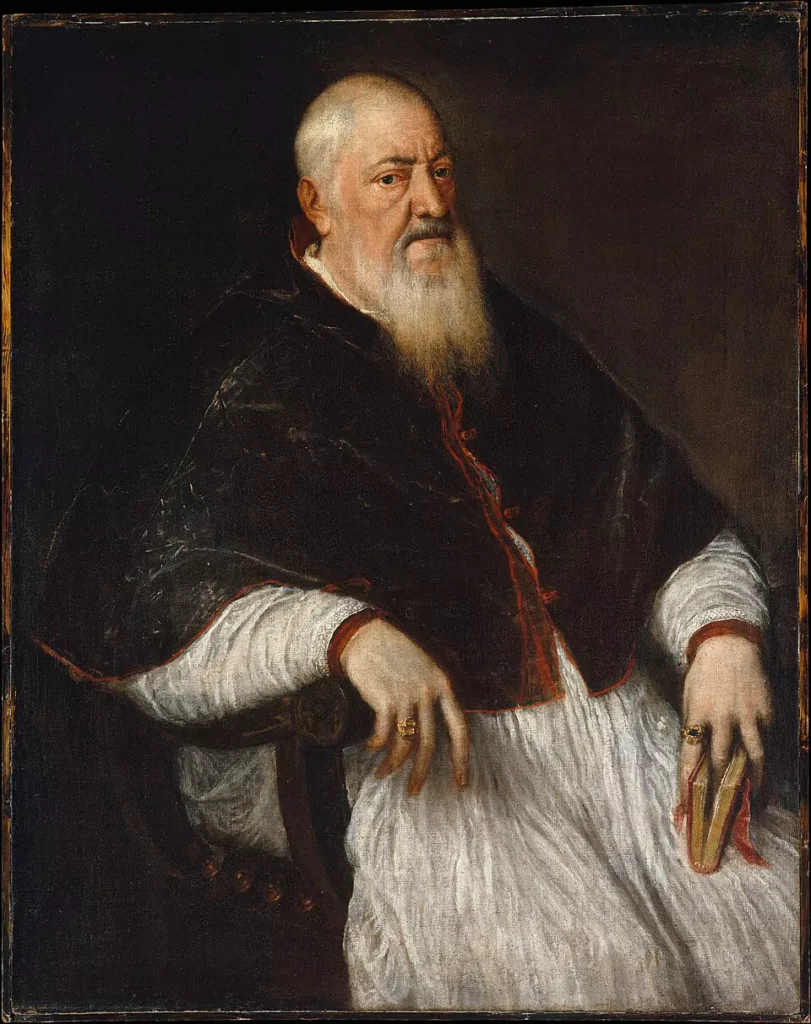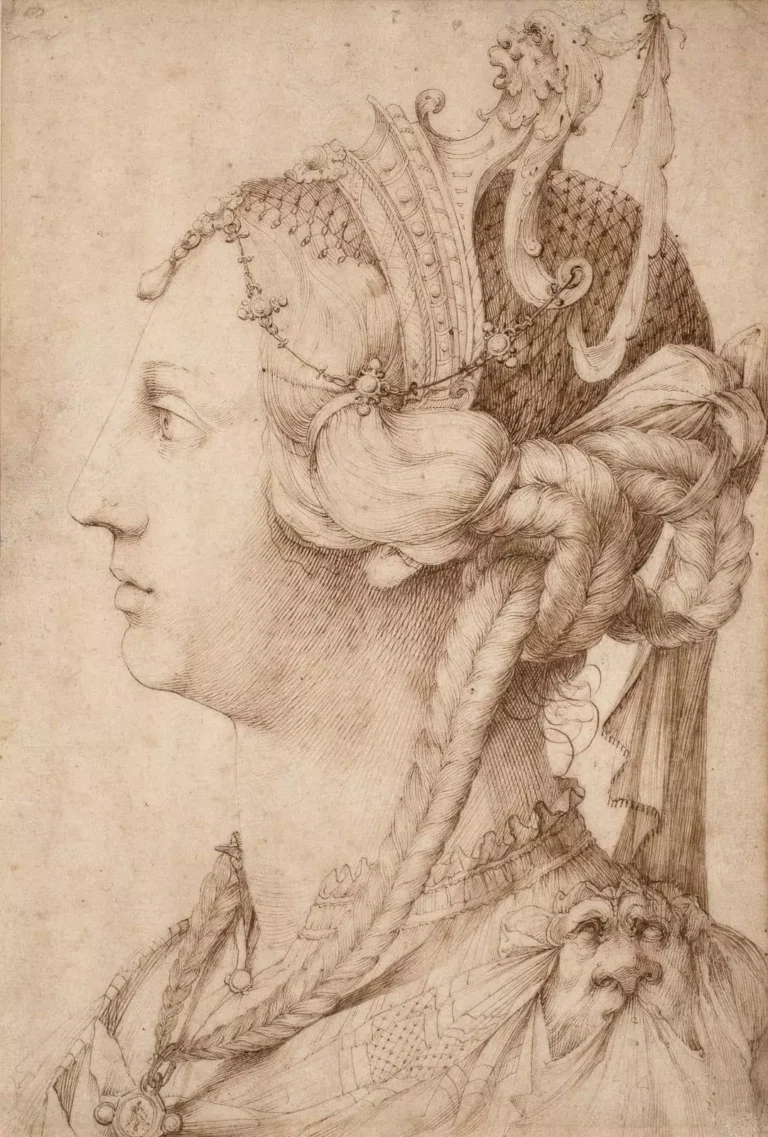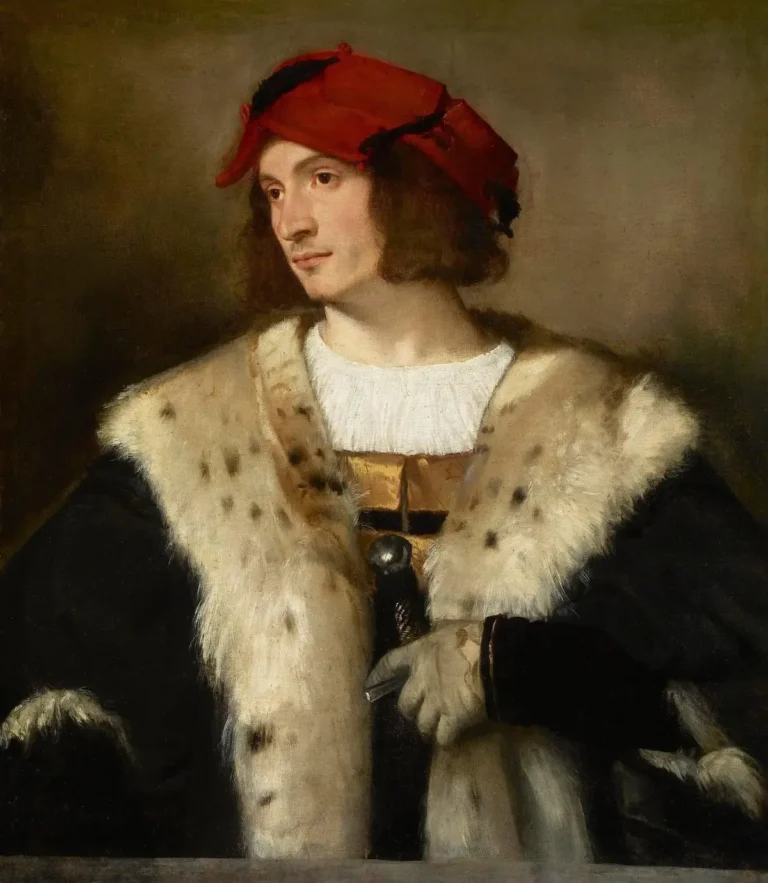Looking for a muse? Check no further. Discover the Best of Art, Culture, History & Beyond!

| Artist | Titian (1490–1576) | |
| Title | Portrait of Cardinal Filippo Archinto | |
| Date | 1558 | |
| Medium | oil on canvas | |
| Dimensions | height: 114.8 cm (45.1 in); width: 88.7 cm (34.9 in) | |
| Collection | Philadelphia Museum of Art |
There’s something eerie about Archbishop Filippo Archinto’s portrait. If you’ve ever stood in front of this painting at the Philadelphia Museum of Art, you’ll know exactly what I mean. The ghostly veil that partially obscures his face and body is more than just a technical flourish; it’s a statement, a riddle, and perhaps even an omen.
This is not Titian’s only take on Archinto. Another version, housed at the Metropolitan Museum of Art, presents the archbishop without interference—a standard, confident depiction of a high-ranking cleric. But this version is different. Here, Archinto is not simply painted; he is concealed. That curtain, thin as gossamer yet loaded with significance, transforms the image into something much more complex, more psychological. It is a barrier—between past and future, between power and exile, between life and death.

The Enigma of the Curtain
Titian was a master of illusion, and this painting, executed in the late 1550s, is a testament to his genius. He was at the peak of his career, effortlessly blending opaque and translucent layers of paint to create textures so rich and varied that they seem almost to shift before your eyes. Look closely, and you’ll see how the parts of Archinto’s cloak that lie behind the curtain darken, how the delicate weave of the veil catches the light, how the impasto of his white collar feels crisp and tangible. It’s the kind of brushwork that makes you want to reach out and touch the painting—if only museum guards weren’t watching.
Painting something that is both present and absent is no easy feat, but Titian manages it with a breathtaking subtlety. That curtain doesn’t just obscure Archinto; it alters our perception of him. He seems removed, untouchable, as if he exists in a space that is only half-accessible to us. Is this a metaphor for his political entrapment? A visual nod to the machinations of power that shaped his fate? Or is it something deeper—an acknowledgment of mortality itself, of the thin veil that separates the living from the dead?
A Life in Limbo
By the time Titian painted this portrait, Archbishop Filippo Archinto was living in a peculiar kind of exile. His career had been illustrious: he had served under both Emperor Charles V and Pope Paul III, attended the Council of Trent, and defended the Jesuits when they were still controversial. But his appointment as Archbishop of Milan in 1556 was met with political resistance. The Spanish governor of Milan, Juan de Fonseca, refused to recognize him, trapping him in an uncertain state of powerlessness. He lingered in nearby Bergamo, awaiting permission to enter the city that was rightfully his to govern.
This political limbo is palpable in Titian’s portrait. The curtain, in this context, becomes a symbol of obstruction, a reminder of how power is never absolute, how even the most influential figures can be thwarted by forces beyond their control. Notice how Titian leaves one crucial detail untouched by the veil—Archinto’s ring, the mark of his ecclesiastical authority. Even as the rest of him fades into uncertainty, his title remains intact, unchallenged.
Archinto eventually received confirmation of his position from the Spanish king, but fate was unkind. He died before he could ever take office in Milan. It is difficult to look at this painting without seeing it as prophetic: a portrait of a man trapped between presence and absence, his power affirmed yet ultimately futile.
Portraiture as Power, Portraiture as Mystery
There’s an undeniable weight to this painting. Renaissance portraiture often aimed to project authority, to fix a subject’s legacy in time, but Titian does something else here—he unsettles. He makes us question. What does it mean to be seen but not seen? To be powerful yet powerless? To be caught in transition, unable to cross into one’s own fate?
Art history is full of portraits that capture grandeur, ambition, and self-assurance. But Archbishop Filippo Archinto (1558) is different. It doesn’t just document a man; it tells a story—one of defiance, uncertainty, and impermanence. And like the best of Titian’s works, it lingers with you, long after you’ve stepped away.

This article is published on ArtAddict Galleria, where we explore the intersections of art, history, and culture. Stay tuned for more insights and discoveries!



